Search Images
Browse Content (p. 1359)
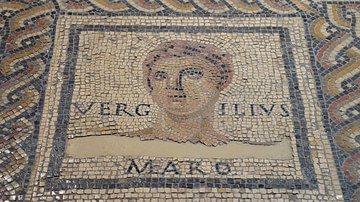
Image
Portrait of Virgil
Portrait of the Roman poet Virgil (VERGILLVS MARO) on the Monnus mosaic from Augusta Treverorum (Trier), end of the 3rd century CE. (Rheinisches Landesmuseum Trier, Germany)

Image
Stela of Kamose
Kamose of Thebes sacked Avaris in an attempt to unify Egypt and drive out foreign kings c. 1575 BCE, Second Intermediate Period of Egypt. Stela on display in the Luxor Museum, Egypt.

Image
Unified Silla & Balhae Kingdoms
A map showing the territory of the Unified Silla Kingdom (668- 935 CE) and Balhae (Parhae) Kingdom (698-926 CE), which controlled parts of Manchuria.
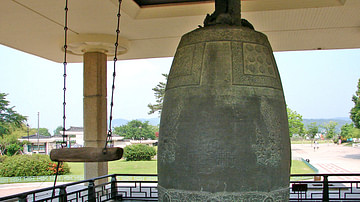
Image
Korean Buddhist 'Emille' Bell
The large cast-bronze bell known as the Emille Bell at Bongdeoksa, Unified Silla Kingdom, Korea. It was cast in 771 CE to honour King Seongdeok. 3.3 metres tall and over 2.2 metres in diameter, it is decorated with lotus flowers and heavenly...
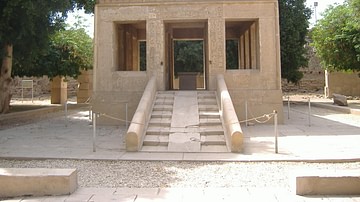
Image
White Chapel
The White Chapel, a structure significant to archaeologists and scholars for listing all the nomes of the time on it, built by Senusret I, 1971-1926 BCE, Middle Kingdom of Egypt. The White Chapel was destroyed and recycled for use in the...
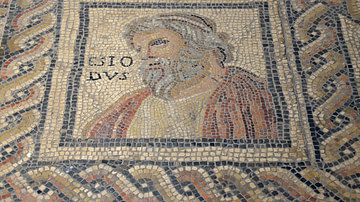
Image
Portrait of Hesiod
Portrait of the Greek poet Hesiod (ESIODVS) on the Monnus mosaic from Augusta Treverorum (Trier), end of the 3rd century CE. It is the only known authenticated portrait of Hesiod. (Rheinisches Landesmuseum Trier, Germany)
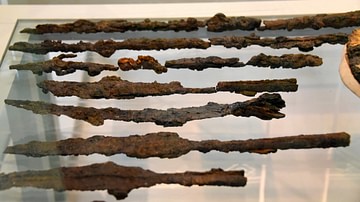
Image
Spearheads and Angons from Sutton Hoo
Spearheads and angons from the ship-burial mound 1 at Sutton Hoo, Suffolk, England, early 600s. The burial chamber at Sutton Hoo contained 6 spearheads of different shapes and 3 angons (barbed lances), all of iron. Spears are the most common...
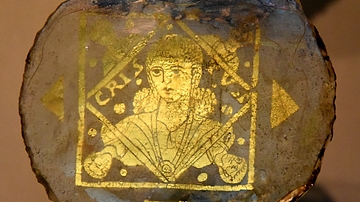
Image
Decorative Glass Medallion Depicting Christ
This glass disc came from the base of a drinking vessel, which may have been made as a wedding gift. Many such discs have been found in the catacombs of Rome, suggesting that when one of a married couple died, the vessel's decorative base...
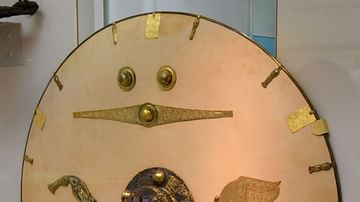
Image
Partially Reconstructed Shield from Sutton Hoo
This is the most elaborate shield to survive from Anglo-Saxon England. The metal rim and gilded copper alloy, gold and garnet fittings are unusual. The central iron boss protected the user's hand, while mounts depicting a bird of prey and...
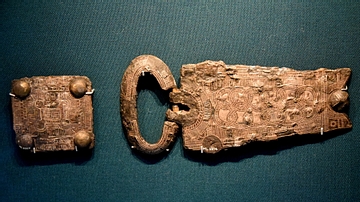
Image
Merovingian Iron Belt Buckle and Fitting
During the 600s CE, supplies of oriental garnets failed and gold and silver grew scarcer. As a result, Frankish jewelers turned to a decorative technique of inlaying designs and silver wire. These often imitated patterns used earlier in garnet...